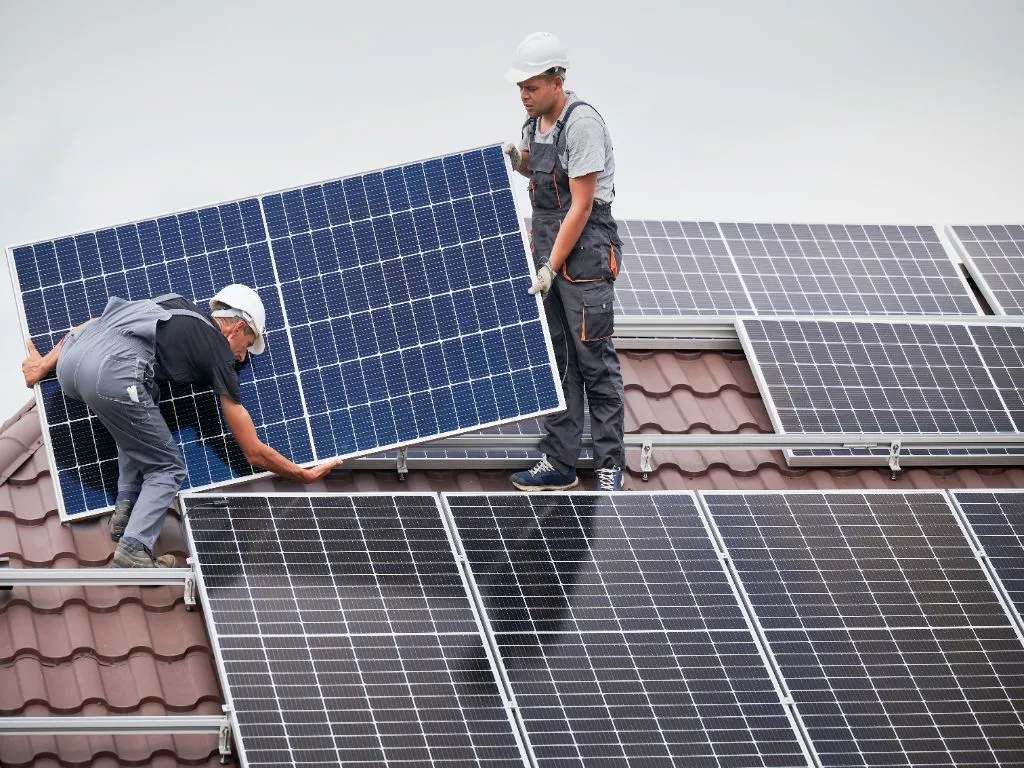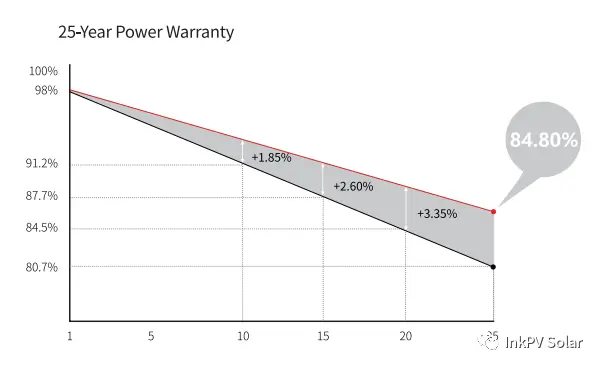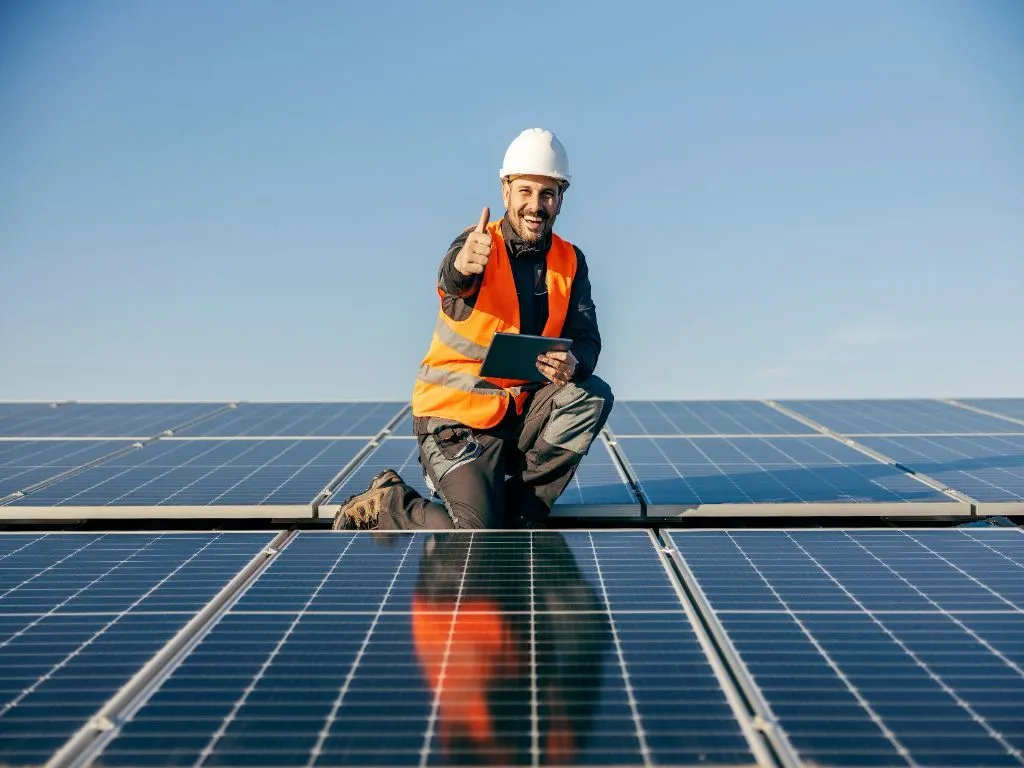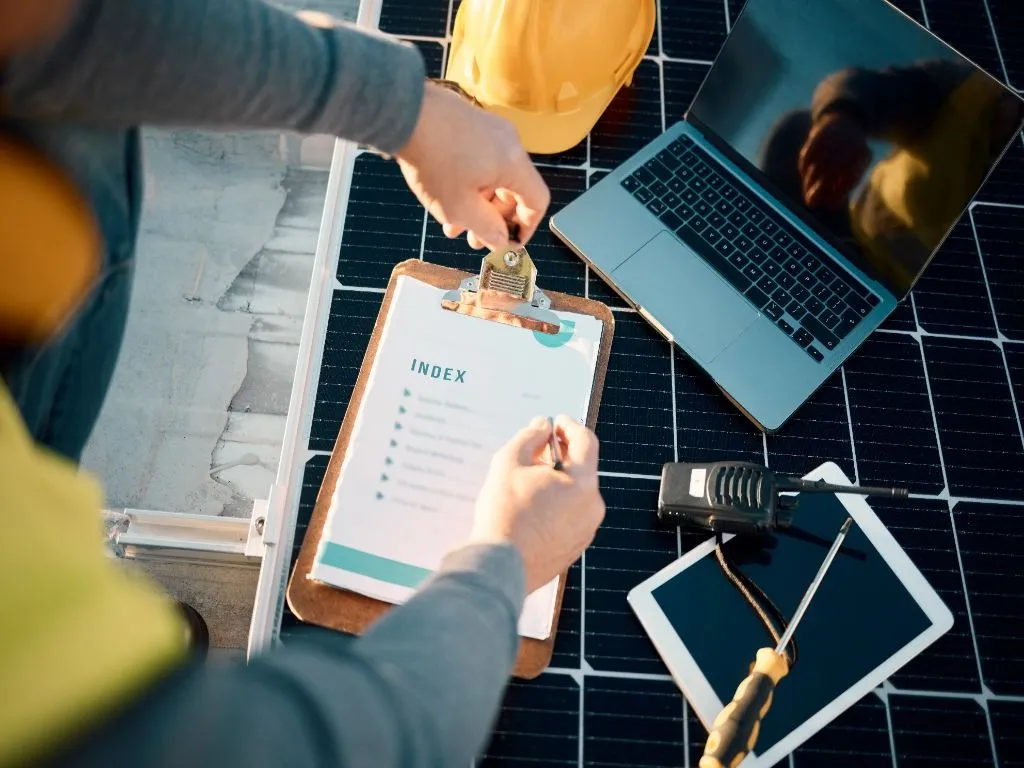Are you thinking about going solar but worried about potential problems down the line? We understand your concerns, so we want to provide you with everything you need to know about solar warranties.
After this article, you’ll understand the differences between various solar panel covers and determine the most essential features for your case. You will better understand what can’t be covered and how to keep your solar warranties valid. Learn how to maximize your coverage and make a correct warranty claim.
What Is the Solar Panel Warranty?

A manufacturer guarantees their products meet certain performance and durability standards over a specified period. Depending on the panel and manufacturer, this time frame usually varies from 10 to 25 years.
If a panel fails within the solar panel warranty period, the manufacturer needs to fix it, saving you significant money, and sometimes, it can be thousands of dollars.
Also, manufacturers are more likely to produce high-quality solar panels if they know they must stand behind them with solar warranties. So, if your panel has a 15-year product warranty, you can be sure they will provide top-notch quality for this period.
Choosing the Suitable Type of Solar Warranties
Solar providers offer diverse warranties, with many presenting multiple options concurrently. As of 2024, there are four solar warranties: product, performance, workmanship, and monitoring.
We will briefly review each type to help you understand and choose the provider that offers the most comprehensive options. Spending an extra few hours researching possible options is always a great idea. However, the Solar Power Systems team will gladly help you with this task.
Product Solar Warranties
Product warranties address material defects in solar panels, encompassing issues like glass cracks, delamination, and corrosion. Ensure comprehensive coverage by checking essential components such as panels, inverters, and racking.
This warranty usually lasts 7-20 years, but some premium manufacturers offer up to a 30-year warranty. If you plan on selling your home, ensure solar warranties can be transferred to the new owner. Keep all of your warranty-related paperwork in a safe place.
- For instance, a standard Panasonic solar panel warranty ranges from 12 to 25 years. However, Panasonic offers an impressive 25-year product warranty on most of its HIT and EverVolt panels, one of the industry’s most extended product warranties.
- LG solar panel warranty typically varies from 15 to 20 years. If you want an extended 25-year warranty, we recommend you check their LG NeON® and LG SIGNATURE panels. They are a bit pricier than other LG panels, but it will pay off due to the extended warranty period.
We highly recommend you check the providers’ and manufacturers’ reputations and pick only proven options. You can check our trusted provider list, saving you valuable time in your selection process.
Ask our experts directly to send you a list of suitable local providers. All you need to do is tell us your desired solar system parameters, solar panel warranty requirements, and ZIP code. Shortly after, you’ll get an expanded list of suitable installers.
Performance Solar Warranties
They guarantee your panels’ minimum power output over time. They go beyond the panels’ physical condition and guarantee their ability to generate a specific amount of electricity over time.
Performance solar warranties are usually expressed as a percentage of the original output, like 80-90% after 25 years of work. It ensures a minimum power output, meaning you receive the expected energy production throughout the system’s lifespan.

Source: LinkedIn
Solar warranties may provide a linear power output decline over time, ensuring a predictable decrease in performance. So, double-check this info in the contract as it directly affects the power production in the long run.
The Tesla solar panel warranty is among the greatest examples of excellent performance coverage. They guarantee at least 80% of nameplate coverage for at least 25 years. So, if you buy their panel today, you’ll most likely get a predictable performance even in 2050.
Workmanship Solar Warranties

These solar warranties cover issues arising from the installation process rather than panel defects. If the panel gets scratched by three branches, it’s not the workmanship case.
This type of warranty covers damage due to:
- Improper installation
- Faulty wiring
- Incorrect mounting
- Sealant problems
Typically, the workmanship solar panel warranty lasts 3-5 years but can vary depending on the installer team.
Monitoring Solar Warranties
They are a relatively new addition to traditional contracts. They cover the functioning and performance of the monitoring and tracking systems. These solar warranties address hardware malfunctions, such as sensor failure and software glitches affecting data collection.
Typically, this solar panel warranty lasts 5-10 years. However, it can vary depending on the manufacturer or installer. Before signing, ensure that it covers all components of your monitoring system.
What Is Not Covered by Solar Warranties?

While those contracts offer valuable protection, understanding what they don’t cover is key to avoiding unexpected costs and disappointment.
- Solar warranties won’t protect you from damage from external factors. If high winds, floods, or any other natural disaster damage the panel, most solar warranties don’t cover it.
- Most panel manufacturers also do not cover vandalism and theft. Consider adding your panels to your homeowner’s insurance or purchasing separate coverage.
- Most solar panel warranties do not protect against animal damage, such as rodent chewing or bird stools. However, some warranties may offer limited coverage, so double-check the contract.
- Beware that solar warranties guarantee a performance only over a specific period. After the warranty period expires, there is no coverage for any issues. For example, if you have a 25-year performance warranty and your panel’s output declines after 30 years of use, no refunds or coverage will be provided.
Normal aging and environmental factors cause gradual power decline beyond the solar panel warranty period. Usually, it’s less than 10-15% of degradation. Most solar providers describe this in a contract.
Check the workmanship (installer) solar warranties in your contract. Otherwise, the provider may not compensate for installation-related issues like improper mounting. Obtain necessary permits and approvals, which may be your responsibility, as some installers may not handle this task.
Inspect your contracts with solar warranties for other exclusions and causes to void the warranty. Improper maintenance, unauthorized modifications, or intentional damage typically revoke the coverage.
What To Look For in a Solar Panel Warranty
Choosing the proper warranty is crucial for long-term peace of mind and financial protection.
- You should determine the desired solar warranties and possible coverage. The most basic options cover up to 5 years of product and 2-3 years of performance. More advanced options can cover up to 25 years of material and up to 10 years of workmanship-related defects. Look for solar warranties with higher performance percentages and longer durations for better panel quality and installation process.
- Check solar warranties’ specific features and ensure they match your case. If you live in a sunny state like Florida, you don’t need extra snow protection. However, you may look for extra wind-resistance warranties. Find out what is not covered in your license and negotiate with the provider to expand the protection list.
- We also recommend that you check the type of panel degradation in solar warranties. There are only two options: linear and nonlinear. The first guarantees a predictable power decline, while the second option warranties might offer less clarity. Choose based on your preference for predictability.
- Figure out the claim procedure, required documentation, and response times. Credible solar providers will explain the claim procedure before signing the solar panel warranty contract. If the company refuses to provide details, it’s a red flag.
- While looking for solar warranties, check their costs. Extended contracts may add to the upfront cost but can provide valuable peace of mind and financial protection.
Keeping Your Solar Panel Warranty Valid
Fulfill all contracted responsibilities and familiarize yourself with essential details and care requirements. If you violate form paper maintenance, you can revoke the solar warranties.
The documentation includes the most common maintenance tips. Many manufacturers also provide user-friendly cleaning guidelines for household items.
Prioritize regular inspections with visual photo fixation. It may become handy during the solar panel warranty claim. Ensure cautious yet detailed cleaning during each self-inspection. Remove dust, debris, and snow that can hinder sunlight absorption. Don’t use harsh detergent. In most cases, it will be enough to wipe panels with a damp cloth and let them naturally dry.
Address any identified issues promptly to prevent them from escalating and potentially voiding your solar warranties. Contact the installer team if you are still determining if your current case is the guarantee case. Most panel power fluctuations are easily fixable. In any case, it will be better to solve the problem initially.
Respect installation requirements; any retreat from solar panel warranty rules can revoke the warranty. Avoid unauthorized installments, modifications, or repairs to your solar panels or system components. Use only verified teams to install and repair. Typically, you can find a proven team list in your solar warranty contract.
The Difference Between Manufacturer and Installer Solar Warranties
One of the most frequent solar forum questions is, “What is a manufacturer’s warranty, and how does it differ from an installer one?” Understanding the difference between manufacturer and installer coverage is crucial for making informed decisions.
- A manufacturer solar panel warranty covers material and defects in the solar panels. It’s mostly limited to the panels, excluding installation-related issues. This warranty lasts 10 to 30 years and can often be transferred to new homeowners if you sell your property.
- The installer’s solar warranty covers issues arising from the installation process, such as improper wiring, faulty mounting, or sealant problems. It focuses on the installation quality and its impact on system performance. This solar panel warranty usually lasts 2 to 5 years and is often non-transferable to new homeowners. The transferability may vary based on the installer’s policy.
But what do you do if you sign a solar lease? People are curious about who becomes responsible for solar warranties in this case. Typically, the installer takes over the communications. If you have issues with panels, you can safely contact the team that installs the system. They fix the problem independently or contact the manufacturer to provide the best possible service for you.
How To Properly Make Solar Warranties Claim

If something happens with your panels, keep yourself calm. We recommend you adhere to these instructions, and the situation will be resolved smoothly.
- Identify the problem. Carefully examine panels and monitoring systems and, if possible, take photos and videos. These will be your evidence for future solar panel warranty claims.
- Determine which contract covers the issue. Refer to your manufacturer’s warranty and installer guarantee documents. Carefully read the scope of coverage, exclusions, and claim procedures.
- Contact the relevant party and provide them with evidence. Contact the appropriate party once you’ve determined the relevant solar panel warranty. If it is the manufacturer, contact them directly. For installer guarantee claims, contact your solar installer.
- Follow the claim process. It can differ depending on the manufacturer. You may need to provide additional information, such as system details, purchase date, and proof of ownership.
- Prepare for potential outcomes. Depending on the issue and the solar panel warranty terms, you might receive repairs, new panels, financial compensation, etc.
Claim duration differs depending on the issue and provider policies. In some cases, it can take just 2-3 weeks; in other solar panel warranty cases, it could be months.
Keep solar warranty papers and copies of communication with the installer even after the contract expires. Don’t hesitate to clarify any doubts or questions during the claim process.
Considerations While Signing Solar Warranties: Pick the Best Option
When reviewing solar panel warranties, carefully examine the details for potential exclusions or limitations, such as weather damage, vandalism, or improper installation.
Confirm the transferability of solar warranties to a new homeowner, enhancing the property value. Take time to compare options from various manufacturers and installers before signing a contract. While warranty length is important, consider the terms and conditions and ask company representatives questions to make an informed decision.
Solar Power Systems directly collaborates with more than 100 solar providers across the US. Contact our experts if you don’t want to spend time manually sorting potential options.
Tell us your location and potential needs so we can find the local team for you. We will give you the provider list with solar panel warranty options that suit your needs. Feel free to ask any questions related to the panel purchase and installation, from legal to aftercare topics.


